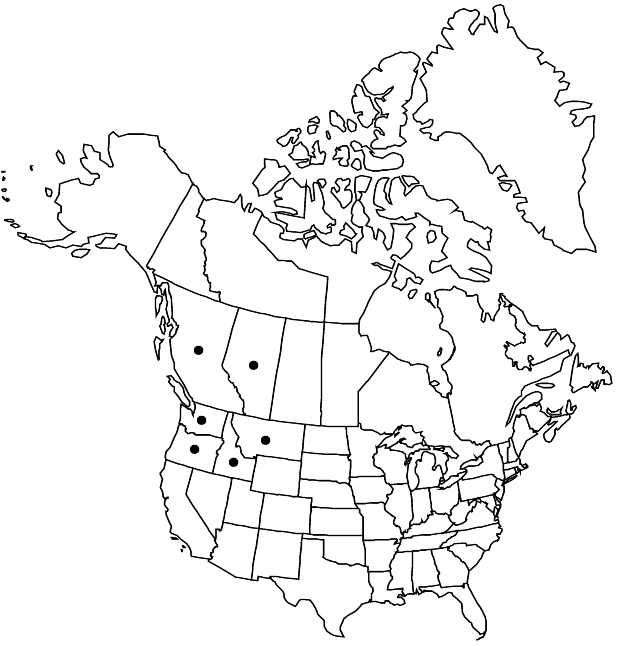Difference between revisions of "Suksdorfia violacea"
Proc. Amer. Acad. Arts 15: 42. 1879,.
FNA>Volume Importer |
FNA>Volume Importer |
(No difference)
| |
Revision as of 20:28, 24 September 2019
Plants 10–25(–40) cm. Leaves: stipules of rosette leaves barely expanded at bases of petiole, stipules of all cauline leaves conspicuous; petiole 1–6 cm; blade 0.5–2 cm, shallowly 5–9-lobed, base cordate to truncate, apex rounded. Inflorescences loose, cymose panicles, 2–20-flowered, 5–40 cm, stipitate-glandular; bract subtending pedicel scalelike. Flowers: hypanthium free from ovary 0.5–1 mm, narrowly obconic-campanulate, 3–3.5 mm, short stipitate-glandular; sepals greenish with purple margins and tips, narrowly triangular-lanceolate, 2–3.5 mm, apex acuminate; petals erect, usually pink to violet, rarely white (sometimes drying bluish), elliptic to obovate, unlobed, 6–9 mm (including claw); stamens included, 1–1.5 mm; ovary 1/2 inferior; styles absent. Capsules brown, ovoid, 6–7 mm. Seeds ellipsoid and prismatic, 0.5 mm. 2n = 14.
Phenology: Flowering Apr–Jun.
Habitat: Wet, mossy, rocky crevices and cliffs
Elevation: 0-3000 m
Distribution

Alta., B.C., Idaho, Mont., Oreg., Wash.
Discussion
Suksdorfia violacea is found from the mountains of Montana to the eastern slopes of the Cascade Mountains of British Columbia and Washington and to northwestern Oregon.
Selected References
None.
